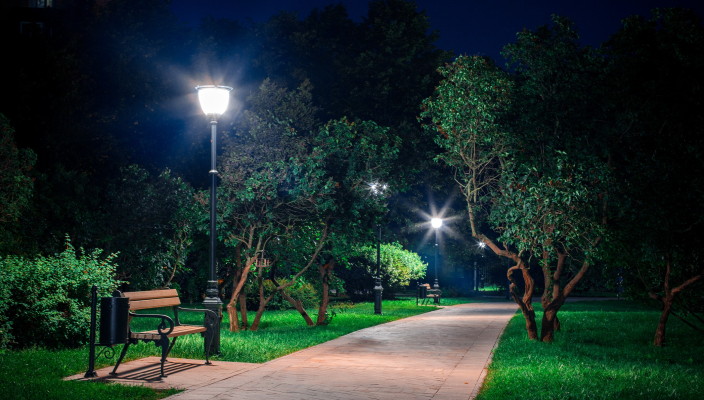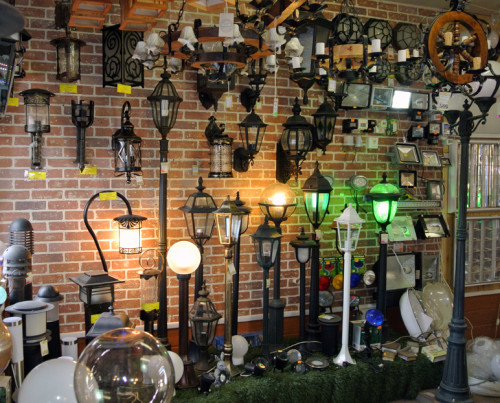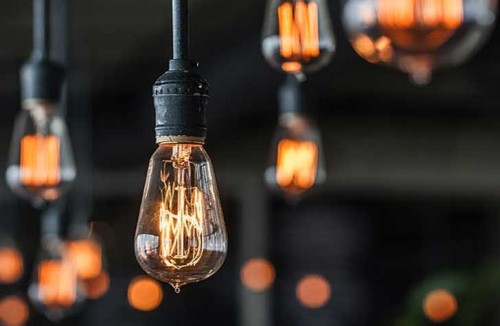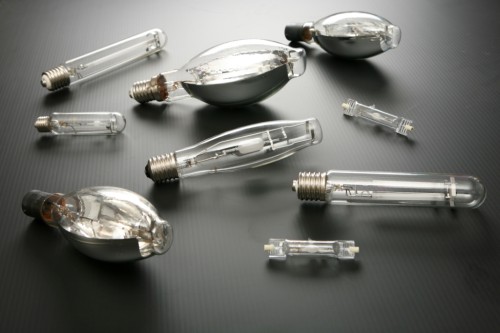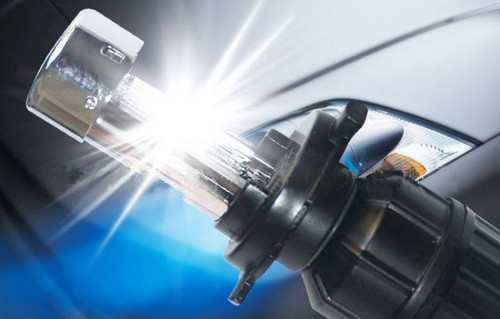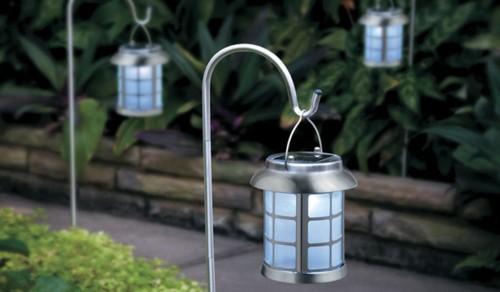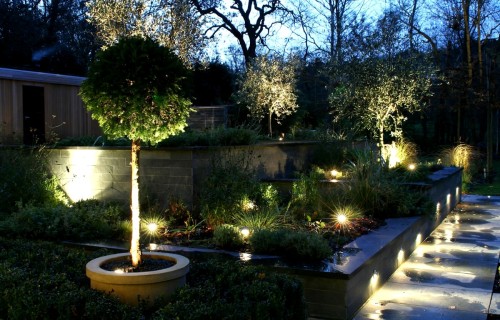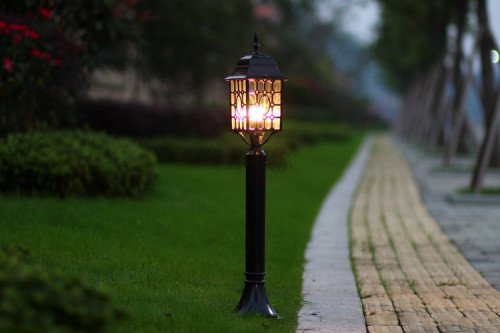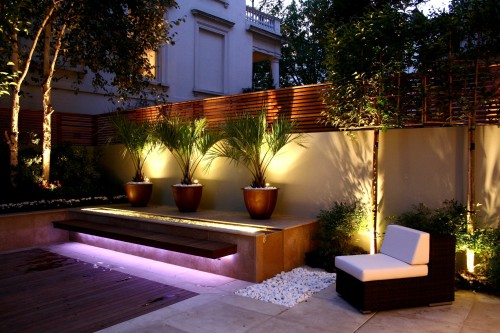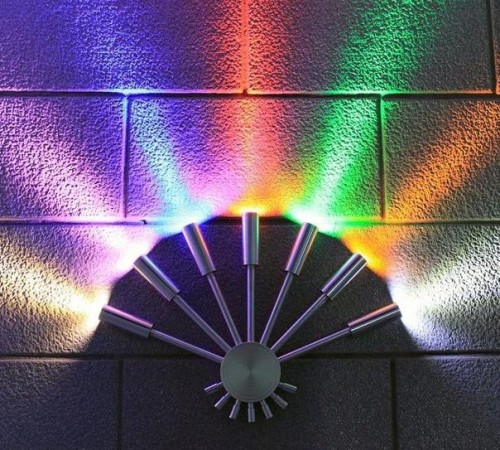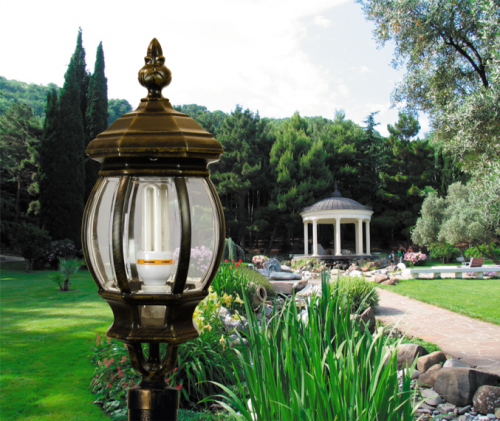The beauty of the local area largely depends on the proper lighting. Modern manufacturers offer the widest selection of various lighting devices to use them in the gardens, on the facades of buildings, in arbors and terraces, along paths and tracks, as well as in other places. What are street lamps and how to install them on the plot we will tell in this article.
Content
Types of street lighting
All lamps intended for the streets can be divided into 2 main types:
- Facade lighting is represented by appliances that are mounted on the external walls of the buildings. The rays of such lamps and spotlights are aimed at some separate area that needs lighting, for example, on the porch.
- Landscape lighting is installed at the local area. They allocate the boundaries of garden tracks, mounted on lawns and near the flower, near fountains, statues, trees, etc.
A variety of street lamps on the source of lighting
The devices that are installed on the facades of the buildings and in the household plots are distinguished by a large variety. Consider in detail what options are available on sale in the modern market.
Incandescent lamps
Incandescent lamps are the easiest type of lighting. They are distinguished by high energy intensity, heated strongly during operation, but they have good power. One species of such lamps are halogen instruments, inside which buffer gas is located. The difference between halogen lamps consists in greater life expectancy, which exceeds the indicators of simple incandescent bulbs 2-4 times.
Gas discharge lamps
Their work is based on the burning of gaseous fuels: methane, propane, ethylene, hydrogen and other gases. Gas discharge lamps have many advantages to which it is worth attributing high power, a long time of use, component of 3,000 to 20,000 hours, as well as good quality light rendering. Such devices are often used to arrange decorative illumination. Gas discharge lamps have cons: noise in the process of work, as well as the presence of mercury as part of some types of lamps. If the flask is damaged, the device becomes dangerous for health, however, the flasks are usually made from durable materials, and noisy work in street conditions will not deliver special discomfort.
Gas discharge lamps are sold in three versions:
- Mercury devices emit light due to the preparation of the gas discharge in mercury pairs. Different with high incandescent speed, which is why only heat-resistant wires should be used when they are installed. Such lamps have good power, but in the process of operation increase pressure. To ignite the lamp again, you have to wait for its complete cooling. Mercury lamps poorly tolerate voltage fluctuations in the electrical network. With a weak voltage, the working device may turn off, and the non-working does not light up. The peculiarity of mercury lamps is the fact that phosphor is applied to their inner surface. In the process of burning, such a lamp radiates ultraviolet. These lamps are economical, which makes it possible to install them in large territories.
- Scrap metalwater lamps are another subspecies of gas-discharge lighting. Their distinctive feature is high power and good light, so that such lamps are used in large areas, for example, on scenes, stadiums, etc. Scrap metalworgled lamps emit light resembling daylight.
- Sodium lamps work by forming a gas discharge in sodium parats. Sodium lamps have a soft yellowish glow and at the same time have high power. The disadvantage of devices is that the quality of their work depends on the temperature of the ambient air. To reduce this dependence and allow the lamps to always work at the desired temperature, they are concluded in a flask from borosilicate glass.
Xenon lighting devices
Light in such lamps radiates an electrical arc, which is located between two electrodes. As a rule, such electrodes are made of tungsten, and the flask itself fill the pairs of metals. The glow spectrum in xenon lamps is different and depends on the internal pressure and temperature.
Fluorescent lamps
This type of lighting devices is considered one of the most durable, since their life is 10 times higher than the other analogs. Modern fluorescent lamps are characterized by good light output and economy, they work without noticeable noise and flicker.
It is worth noting that the frequent switching on and off of such a lamp reduces its service life, which is why luminescent lamps are best suited for street lighting. For energy consumption, such devices are considered a very profitable option, and thanks to their reliability they won the first place for demand among consumers.
Street lamps on solar panels
The most economical variant of the lamps today is considered to be instruments running from solar panels. They are good because they can be applied both on extensive areas and in private household plots. In the modern world, such lamps are considered the most profitable outdoor lighting option.
Street sun lamps have another advantage - they do not need to be connected to the electrical outline to work, which means that the lamps can be moved from place to place if necessary. Among other things, they turn on and disconnected by themselves and do not require human participation.
In the dark, the instruments increase the level of brightness, and during the day they are independently turned off. Solar lamps are produced in a variety of options and may have an unusual, interesting design.
What you need to consider when choosing street garden lamps
Choosing which lighting to install on its site, it is advisable to pay attention to some recommendations:
- Instruments located near paths, tracks and other pedestrian zones, should give soft scattered light. It is possible to ensure such a glow with correctly selected plafones, which will dispel the rays.
- For facade lighting, especially for highlighting newsplas or buildings, you should use spotlights that will give a unidirectional light stream.
- A variety of facade lighting is architectural. It plays a decorative role, and various searchlights and lanterns are also used for it, the rays of which can have the most unusual colors. Architectural lighting should also include highlighting statues, fountains, sculptures, arbors, etc.
- Choosing lamps for the street, pay attention to such important features as convenience of operation, degree of refusal, power, duration of use.
- Before installing the lamps on the household plot, it is important to determine the climatic conditions, the subtleties of the installation, the requirements for the brightness of the instruments.
Types of street lamps for external execution
Lanterns
Street lamps that are mounted on the pillar are called lanterns. We can meet big lanterns from roads and highways, but also in garden design, such elements have found their use. True, instruments with a much lower power are used to illuminate the garden, which is no more than 150 W, as well as with smaller dimensions.
Spotlights
The searchlights most often have high power and a directed light stream, which is used to highlight certain zones or objects. Small spotlights are convenient to illuminate parts of buildings facades, chambers with house numbers, small architectural forms in the gardens. Large spotlights are installed at enterprises, stadiums, sports complexes, car parking, etc.
Street LED lamps
A group of LED devices is represented by a variety of varieties:
- Street cantilever luminaires are structures equipped with M-shaped brackets that play the role of supports. Mount Console Lighting can be almost anywhere, it is perfectly fixed on any surfaces. These street wall lamps are distinguished by durability and efficiency.
- Duralate is a transparent plastic tube, inside which the LEDs are placed at an equal distance from each other. The tube itself is made of flexible material painted in any shade. Duralate is connected to the controller, separate parts are connected to each other with a clutch. Due to the flexibility, such a tape can be paved almost anywhere, flexing it at the desired angle.
- Duraflex - LED cord, characterized by increased flexibility, strength and water resistance. It is easy to install, it can be mounted in any places regardless of the conditions of the external environment.
- The grid is the type of lighting device, which is most often used to decorate the facades of buildings or other extensive flat surfaces.
- Another type of LED lamps of street lighting is a ruler. It looks like a long thin band of plastic on which LEDs are installed.
Installation of street lamps do it yourself
To perform the installation of street lighting on the household territory, you must prepare the following:
- Immediate lighting devices directly.
- Technique that will be responsible for managing and automating lamps. Such instruments will allow lanterns and spotlights to work without human participation, that is, turn on and off independently during the required time.
- Materials for laying communications: wires, pipes, ties, fasteners, etc.
Installation of lighting on the site begins with the design. This stage is considered one of the most important. Before starting the installation of lamps, they should be distributed to functional groups, as well as draw the plan for their future arrangement.
According to the project, in the right places, the sections are digging for the creation of formwork and fill the foundation, which will serve as a supporting device. All of these recesses are combined between themselves by furrows, the depth of which is about 40 cm. The same furrow is swam from the extreme light to the house, to subsequently put the wires there and connect them to the power supply.
In the prepared trenches, a small sand layer is poured on which the wires are stacked. Cables are pre-hidden in a special sleeve that will protect them from damage. If there are several types of lighting devices on the site, each group should be connected separately.
When the wires are laid, the sand is poured on top of them with a layer of about 10 cm, and then laid bricks or crushed stone. The solid material will create additional protection, due to it will reduce the risk of mechanical damage to the wiring.
In places of installation of lamps, cables output outward loops. The recess is filled with a prepared concrete solution, and the channels connecting them, fall asleep and tamper.
The wire loop is cut, the ends are cleaned and the installation element of the lighting device is put on them. This part of the luminaire put on a dried concrete and fixed with dowels or screws. The device is then connected to the power supply and install it on the heel. In the process of work, it is also necessary to ground to reduce the risk of electric shock.

